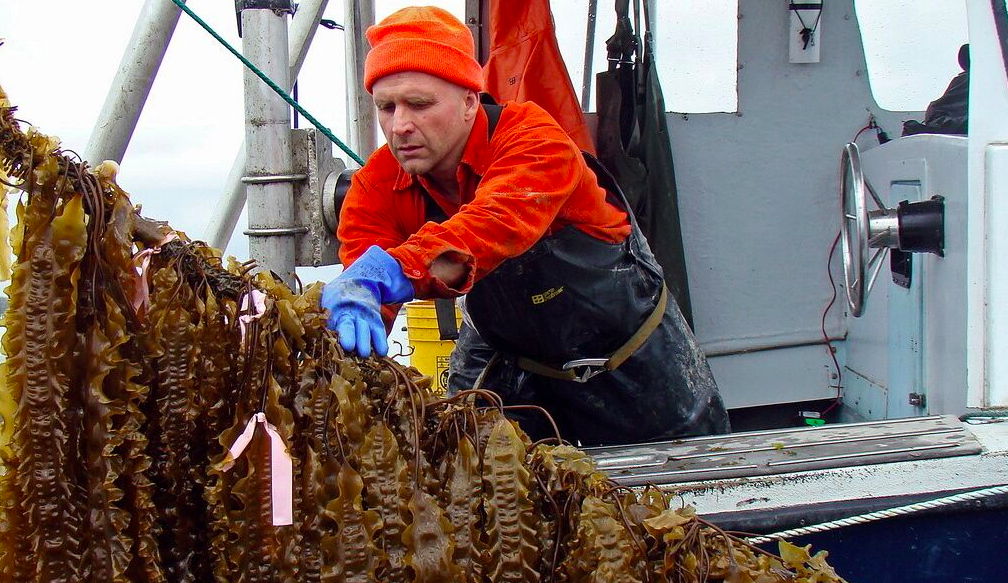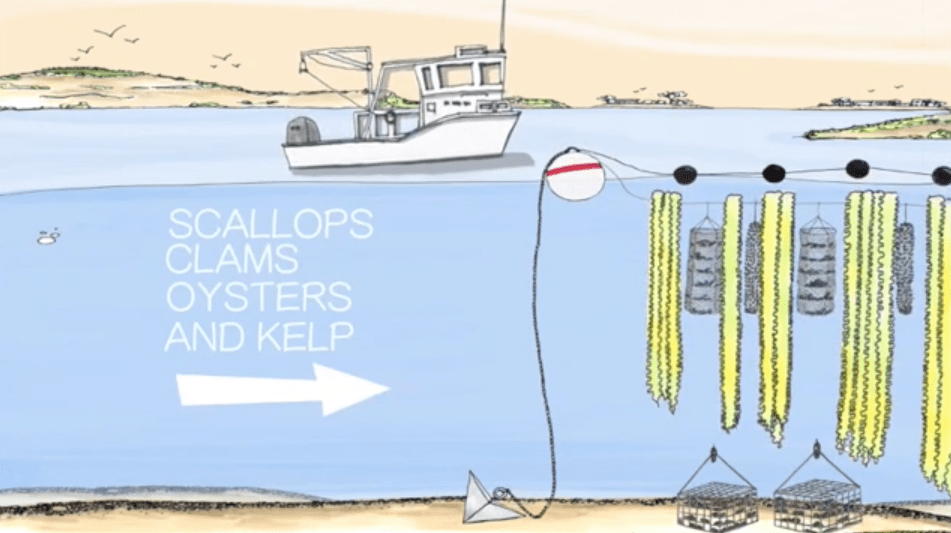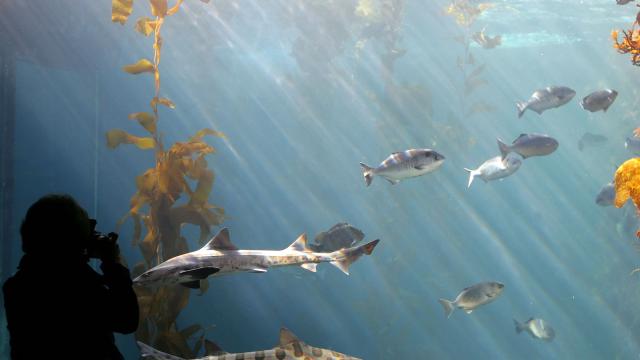It seems like every week brings a new doomsday study about the death of our oceans. But off the coast of Long Island, an underwater farm is demonstrating how sustainable ocean farming can clean the water, give sea life a safe haven, and turn kelp into the “next kale.” Its creators hope the model will catch on — and a recent $US100,000 award will give it more capital to develop the idea.
It’s called the Thimble Island Ocean Farm, and it was created by an organisation called GreenWave — the flagship for an idea its creator, Bren Smith, calls a “3D ocean farm.” Smith, who was a career fisherman before huge die-offs and climate change made him reconsider the economic model behind his job, has designed a model for oceanic farms that use seaweed and shellfish to create hanging ecosystems that restore the ocean and its lifeforms while creating farmable “crops” without the threat of overfishing.
GreenWave has been around for more than a decade, but it’s back in the spotlight this week after the Buckminster Fuller Institute named it the winner of its annual award, which comes with a $US100,000 check to fund the further development of the winning project.

Bren Smith, image via Buckminster Fuller Institute.
The increasingly steady demise of biodiversity in the ocean is a huge problem. The most recent study about the issue, published this month in the Proceedings of the National Academy of Sciences, looked at more than 600 such studies of the ocean and concluded that, unless something drastic changes, there will be a large-scale “collapse of the marine food chain” by 2050 due to acidification, overfishing, and ocean warming.
Smith and his GreenWave project are taking the idea of farm-to-table, pioneered by people like Dan Barber at Blue Hill at Stone Barns, and moving its ethos to the ocean. Building on the work of scientists who study seaweed, like Charles Yarish, his 3D farms are engineered with every step of the ecosystem in mind. The hanging farms use the full “ocean column” to grow seaweed and mussels as well as cages of oysters and clams.

These are “restorative species” that clean the water, provide a place for all manner of other sea life to flourish, and — this is crucial — provide an income stream for farmers. (Smith works with chefs to develop new recipes that use kelp, which you can hear more about on this excellent podcast by GastroPod, which terms kelp the “kale of the sea.”)
As for the cleansing effects? GreenWave says that just an acre of 3D farm can filter millions of gallons of ocean water every day, while kelp alone will sequester five times more carbon than any of our foliage here on dry land might. “The design requires zero-inputs — there is no need for fresh water,” they add.
The key is to get the research of GreenWave into the hands of more fishers, and to keep developing the science behind the idea. Next month, Smith will accept the award and hopefully reveal more about how the organisation’s going to use its check.
“Hundreds of millions of years ago [Mother Nature] created these two technologies that mitigate our harm in terms of climate change, in terms of overfishing, in terms of nitrogen pollution,” Smith says in a video about the project. “There are elegant solutions out there.”
Lead image: Kelp at the Monterey Bay Aquarium. AP Photo/Marcio Jose Sanchez.
